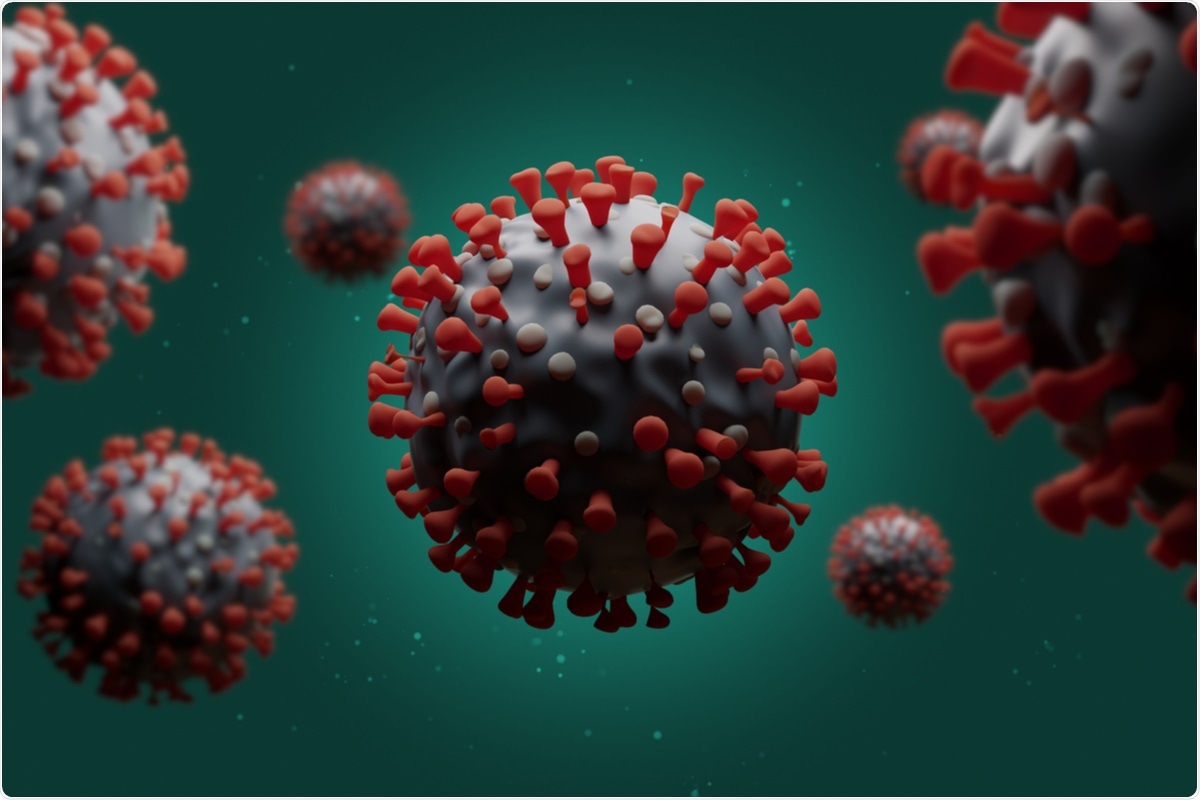The widespread rollout of the coronavirus disease 2019 (COVID-19) vaccines has significantly reduced the number of new cases and disease severity in locations with high adoption rates, but breakthrough infections are still frequently reported. In a paper recently uploaded to the preprint server medRxiv*, breakthrough infections are compared with infections in immunologically naïve individuals. The study reported reduced infectiousness and severity of disease in the vaccinated, in addition to a tendency towards severe acute respiratory syndrome coronavirus 2 (SARS-CoV-2) tissue compartmentalization.
 Study: Longitudinal analysis of SARS-CoV-2 vaccine breakthrough infections reveal limited infectious virus shedding and restricted tissue distribution. Image Credit: joshimerbin/ Shutterstock
Study: Longitudinal analysis of SARS-CoV-2 vaccine breakthrough infections reveal limited infectious virus shedding and restricted tissue distribution. Image Credit: joshimerbin/ Shutterstock
The group assembled 23 individuals infected with SARS-CoV-2, six of which were fully vaccinated, six had received only the first dose at least 14 days prior, and the remaining 11 had received one dose within the last 14 days. Nasal swab and saliva samples were collected daily from each participant infected with either the alpha or gamma variants. They underwent RT-PCR testing to determine viral load.
A preprint version of the study is available on the medRxiv* server while the article undergoes peer review.
Fully vaccinated
Only one had viral culture positive RNA levels in the saliva and nasal cavity of the six fully vaccinated individuals. The other five showed only low or undetectable levels of viral RNA in the nasal cavity. This suggests that there is little to no risk of SARS-CoV-2 transmission from most fully vaccinated individuals.
Amongst the fully vaccinated that had detectable levels of viral RNA in both the saliva and nasal cavity, viral load remained higher in saliva for several days longer, a phenomenon not observed in a similar study of 60 non-vaccinated individuals. The authors suggest that this could indicate an initial infection in the oral cavity that was then prevented from establishing within the nasal cavity due to the vaccine. One fully vaccinated participant exhibited highly variable viral loads between the nasal and oral compartments over time, undetected in the nasal cavity for one week until the infection broke through. The vaccine was insufficient to prevent migration in this case.
Many studies have reported viral shedding amongst vaccinated and infected individuals to occur at similar levels, as determined by RT-PCR, possibly suggesting that the risk of transmission from either individual could be similar. However, viral loads as determined by RT-PCR may not be representative of infectiousness. The group further compared the probability of a successful viral culture establishing and viral load as determined by RT-PCR amongst the vaccinated and non-vaccinated, finding that given equal viral load, the probability of infection from vaccinated individuals is still lower. The level of viral shedding from vaccinated individuals cannot be correlated with infectiousness compared to non-vaccinated individuals.
Partially vaccinated
The partially vaccinated participants demonstrated greater variability, two of whom tested positive by RT-PCR over the course of the study. Three of the participants demonstrated viral shedding dynamics indistinguishable from the non-vaccinated, suggesting that while one vaccine dose is somewhat effective in limiting viral shedding, the progress of the disease is less affected. Among those who had received the first dose of the vaccine within the last two weeks, only three of the 11 demonstrated restricted viral shedding. The rest were indistinguishable from the non-vaccinated. Overall, the total number of infectious days detected amongst the vaccinated was significantly lower than the newly or non-vaccinated.
Conclusion
This study has demonstrated that SARS-CoV-2 infected vaccinated individuals are less likely to engage in significant viral shedding, and when they do, the viral particles appear to be less infectious. The vaccinated also report a significantly lower incidence of SARS-CoV-2 symptoms than the non-vaccinated, with 74% of days reported symptomless compared to 37%, respectively. Breakthrough infections in the vaccinated tended to be tissue-restricted, usually only detectable in saliva samples and not the nasal cavity. The usual method of utilizing nasal swabs for routine testing may cause an underestimation of the number of infected amongst the vaccinated.
*Important notice
medRxiv publishes preliminary scientific reports that are not peer-reviewed and, therefore, should not be regarded as conclusive, guide clinical practice/health-related behavior, or treated as established information.
- Ke, R. et al. (2021) "Longitudinal analysis of SARS-CoV-2 vaccine breakthrough infections reveal limited infectious virus shedding and restricted tissue distribution". medRxiv. doi: 10.1101/2021.08.30.21262701. https://www.medrxiv.org/content/10.1101/2021.08.30.21262701v1.full-text
Posted in: Medical Science News | Medical Research News | Disease/Infection News
Tags: Coronavirus, Respiratory, RNA, SARS, SARS-CoV-2, Severe Acute Respiratory, Severe Acute Respiratory Syndrome, Syndrome, Vaccine

Written by
Michael Greenwood
Michael graduated from Manchester Metropolitan University with a B.Sc. in Chemistry in 2014, where he majored in organic, inorganic, physical and analytical chemistry. He is currently completing a Ph.D. on the design and production of gold nanoparticles able to act as multimodal anticancer agents, being both drug delivery platforms and radiation dose enhancers.
Source: Read Full Article
